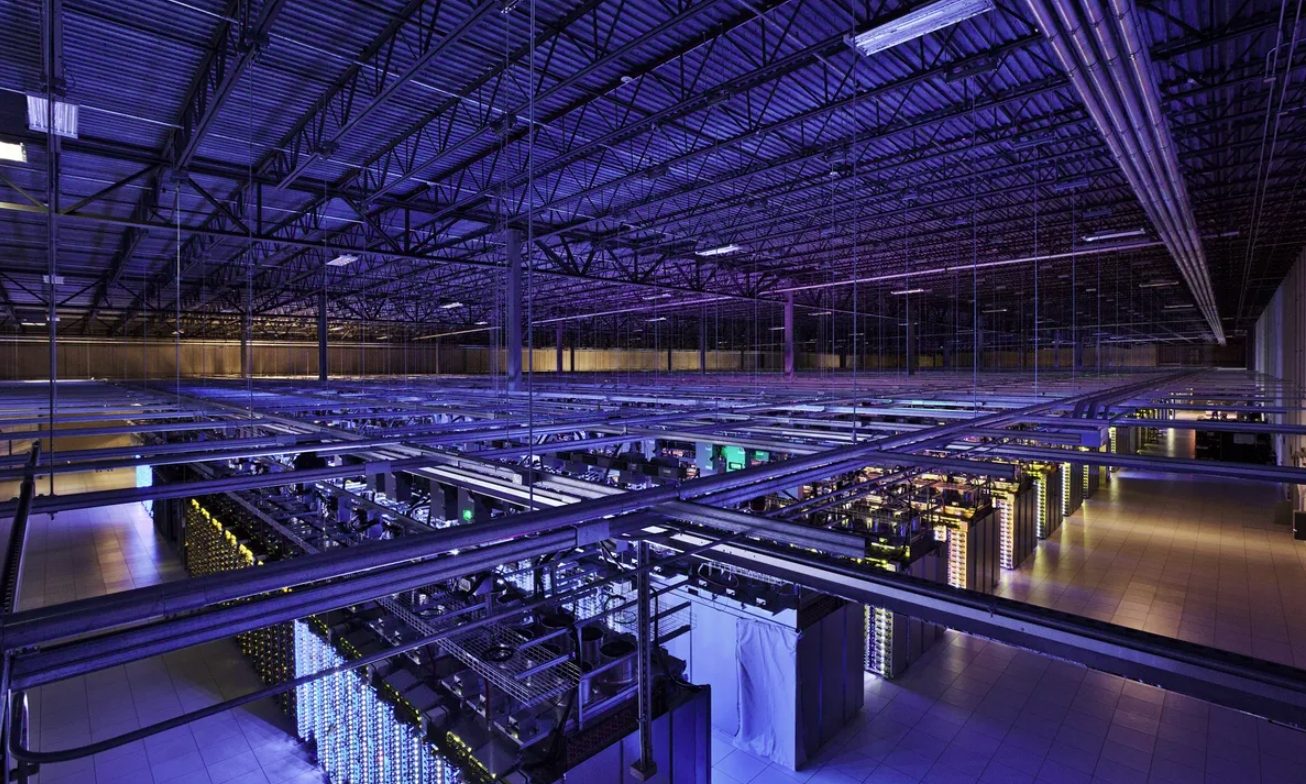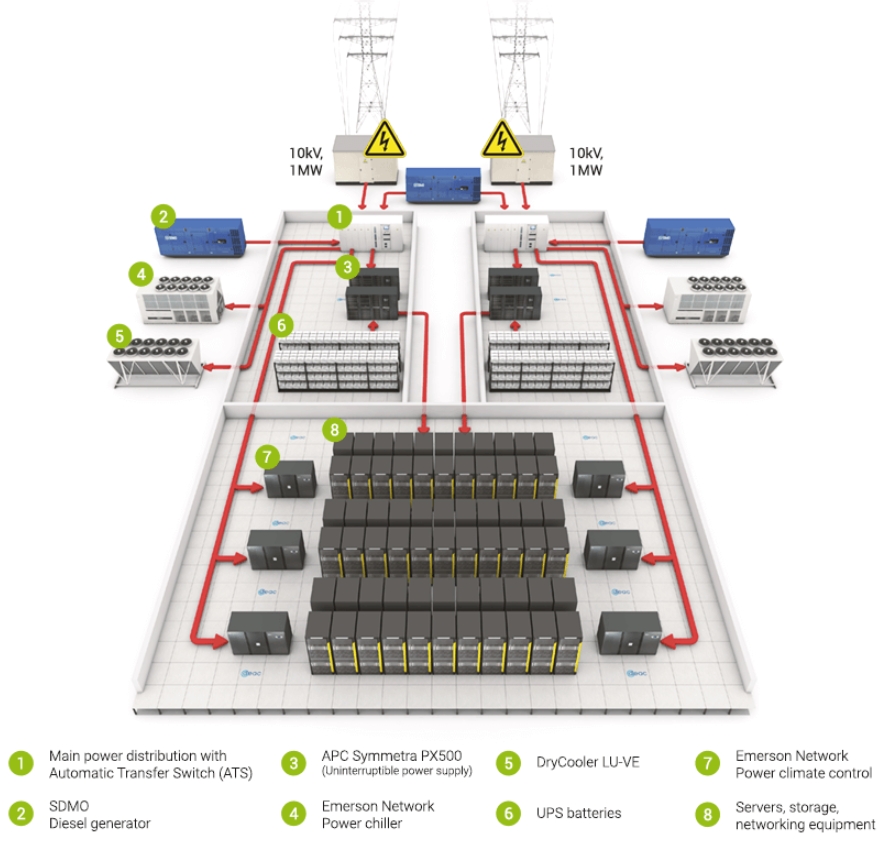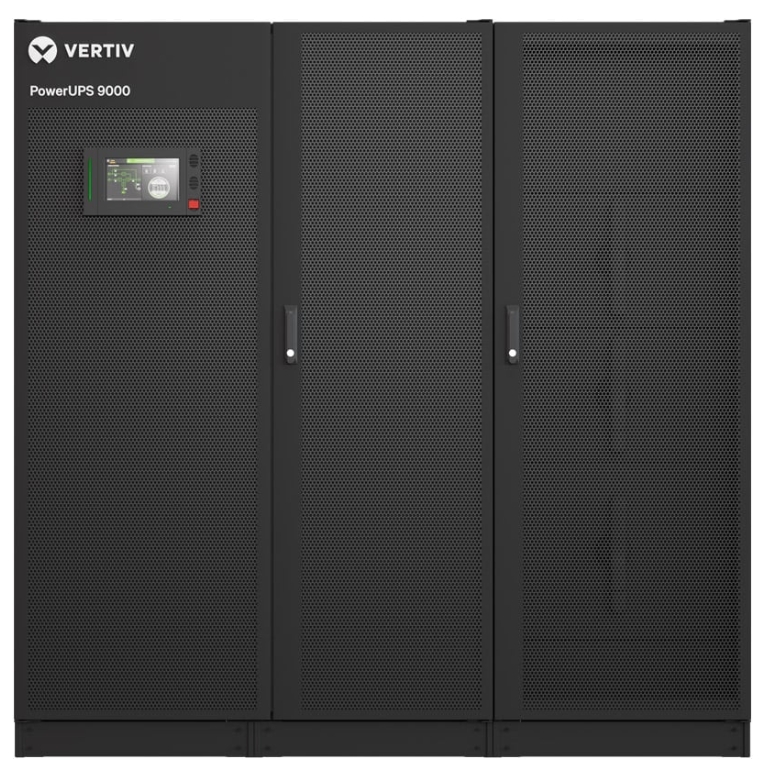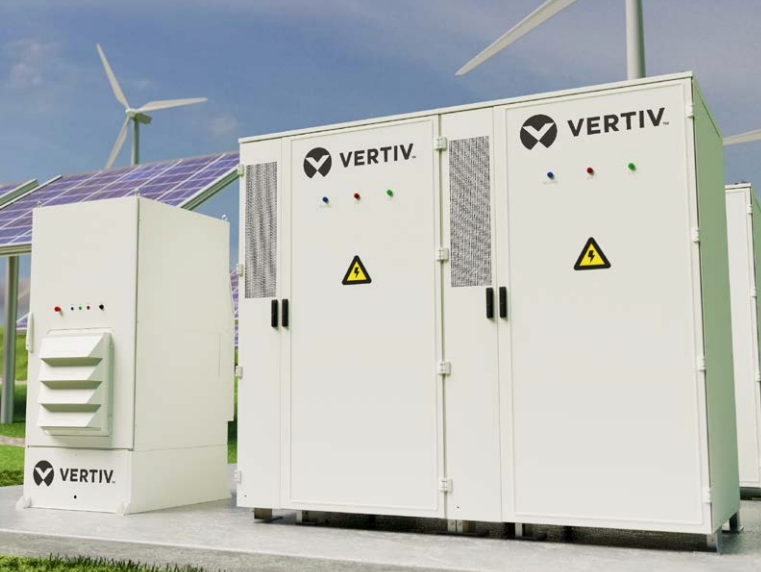Computing
Vertiv (VRT): Keeping AI Data Centers Cool
Securities.io maintains rigorous editorial standards and may receive compensation from reviewed links. We are not a registered investment adviser and this is not investment advice. Please view our affiliate disclosure.

The AI Infrastructure Boom
As the AI boom and data center building expenditure reach the hundreds of billions of dollars, all the attention of financial markets has been focused on Nvidia (NVDA -0.7%), the leader in providing the vital GPUs (Graphic Processing Units) powering AI computation. As a result, Nvidia is now the most valuable company in the world, ahead of long-established tech giants like Microsoft (MSFT +1.5%) or Alphabet (GOOGL +1.53%).
But GPUs are not all that is needed for building data centers for AI and other applications. For example, connectivity is an equally important part, with companies like Broadcom (AVGO +0.18%) greatly benefiting from the data center boom. (follow the links for detailed investment reports on these companies)
Another critical element of a data center is an adequate power supply and enough cooling to compensate for the tremendous amount of energy they consume.
And in that segment, one company has emerged as a strong global leader: Vertiv.
Vertiv Holdings Co (VRT +3.77%)
The Many Components Of A Data Center
While computing is the most expensive part and core element of data centers, they operate reliably only when combined with an array of support systems.
Jensen Huang (Nvidia’s CEO) has previously estimated that ~50% of the cost of a data center goes to that infrastructure, and the other 50% goes to compute, networking, and storage.
Once the power is provided by the electric grid, it is then distributed by the main power distribution and the uninterruptible power supply.
As a backup to guarantee continuous operation, the power supply is also covered by large diesel generators and battery packs.
Another key component is cooling. Whether used efficiently for computing or lost, all the electricity that enters the data center is ultimately turned into waste heat. Without powerful and efficient cooling, the chips would quickly burn out from their own heat production.
So strong climate control and cooling systems are required to keep the data center operating at full power and not damage the precious hardware inside.

Source: Public Comps
These support infrastructures are even larger than the data center proper, leading to some of the largest hyperscaler data centers covering more than a million square feet, or about 25 football fields.
Vertiv Overview
Vertiv’s History
Before it became the leader in power supply and cooling for data centers, Vertiv had a long history in refrigeration, starting in 1946 in Columbus, Ohio.
Then called Capitol Refrigeration Industries, which created the first large industrial heat pump and pioneered work in the development of freeze-dried foods and coffee.
Later, the company’s founder Ralph Liebert, developed the first prototype of a precision air conditioner in his garage. By 1965, the prototype was presented (and later adopted) by IBM, and the Liebert Corporation was founded to commercialize this new product.
Emerson would later acquire Liebert Corporation in 1987 and form Emerson Network Power (ENP). This followed the acquisition of Franklin Electric’s subsidiary, Programmed Power Corporation, adding uninterrupted power supply (UPS) systems and other computing-related items to its product roster.
When private equity acquired ENP from Emerson, it launched Vertiv as a stand-alone company in 2016 and had it listed on the New York Stock Exchange in 2020.

Source: Vertiv
Acquisitions
Swipe to scroll →
| Year | Acquisition | Capability Added | AI Relevance | Source |
|---|---|---|---|---|
| 2018 | Energy Labs / Geist / MEMS | Air handling, rack PDUs, gen maintenance | Broader thermal + power distro stack | Vertiv IR/press |
| 2021 | E+I Engineering | Switchgear, busway, modular power | High-capacity distribution for AI racks | Vertiv IR |
| 2023 | CoolTera | Direct-to-chip liquid cooling tech | Supports dense GPU clusters | Vertiv PR |
| 2024 | BiXin Energy Technology (BSE) | Centrifugal chillers, heat recovery | Efficient heat rejection/reuse | PR |
| 2025 | Great Lakes Data Racks & Cabinets | Custom racks & integrated enclosures | Faster prefab deployment (AI pods) | PR |
| 2025 | Waylay NV | Hyperautomation & GenAI ops software | AI-driven monitoring & optimization | PR |
Since 2016, Vertiv has sold non-essential businesses like power switches and has acquired many other companies to boost its ranking in the industry and acquire key technologies.
Sales synergy is another factor contributing to the profitability of these acquisitions, as the acquired commercial relationship for one product category can be leveraged for cross-selling other products from a different segment of Vertiv.
Among the notable acquisitions can be mentioned:
- Energy Labs, Geist, and MEMSin 2018 (air handling, rack power distribution units, and power generation maintenance).
- E+I Engineering in 2021, adding switchgear, busway, and modular power solutions.
- CoolTera Ltd in 2023 for liquid cooling technology for high-power consumption AI data centers.
- BiXin Energy Technology(BSE) in 2024 for centrifugal chiller technology, heat-recovery & reuse solutions, providing an entry point in the Chinese and Asian markets.
“This acquisition supports our capital allocation strategy, which includes adding technologies that are early in the maturity curve to our portfolio.
Since early 2024, Vertiv has partnered with BSE to manufacture Vertiv-branded products for existing customers in China and throughout Asia.”
In 2025, another 2 acquisitions were added to Vertiv’s catalog:
- Great Lakes Data Racks & Cabinetsfor custom data rack enclosures and integrated infrastructure solutions.
- Waylay NV, for its hyperautomation and generative AI software platforms,enables AI-driven monitoring and control technologies for power and cooling systems.
Vertiv By The Numbers
The company employs 31,000+ employees, of which 4,000+ are field service engineers, working in 24 manufacturing locations & 310 service centers, and has clients in 130+ countries.

Source: Vertiv
Vertiv is still headquartered in Ohio, with the bulk of its manufacturing done in North America, Europe, and India.

Source: Vertiv
Vertiv generated $8B in revenues in 2024 and ranked #1 in both thermal management and UPS and power switching & distribution.
The largest market for the company is the Americas, with Asia Pacific and the EMEA region both making up 22% of revenues.

Source: Vertiv
The largest part of the business is the sale of equipment to data centers, with parts, maintenance, and services making only 22% of revenues. So far, this has been a positive for Vertiv as AI data center building is booming, but investors should remember this could turn into a weakness if CapEx were to slow down.
The company has been growing quickly since 2021, with organic sales up 16% CAGR, operating margin at 19% in 2024, and free cash flow trending toward $1B. The operating margin target is 25% by 2029, thanks to the company now reaching a scale allowing for higher levels of efficiency.

Source: Vertiv
Vertiv’s growth is supported by the overall growth of its main market, with 13-20 GW (13,000-20,000 MW) worth of data center expected to be added every year until at least 2029. For every MW of compute built, Vertiv sees a $2.75M-$3.5M worth of product it can potentially sell.

Source: Vertiv
This number is also rising over time, as each new generation of chips and AI data centers displays increasing power density, requiring equally more dense and compact power supply and cooling, increasing the sale potential per MW for Vertiv.

Source: Vertiv
Vertiv Products
Overview
Both thermal management (cooling) and power supply make around 1/3rd of the company’s revenues, with the rest coming from services to installed equipment and other supporting products like software and other infrastructures.

Source: Vertiv
So while the company is truly global and diversified, it is also still very focused when it comes to its technical expertise, despite being present in almost all levels of support systems of a data center.

Source: Vertiv
To keep answering increasingly stringent technical requirements, Vertiv is investing heavily in R&D, with a 15% CAGR growth of its annual R&D budget, looking to reduce new product time-to-market by up to 50%.

Source: Vertiv
Power Supply
UPS
An important part of the power business for Vertiv is UPS (Uninterruptible Power Supply). These units guarantee that even in the case of energy supply being unstable, the data center keeps operating smoothly, and can switch to an alternative power source like a diesel generator or battery without disturbing the ongoing computing.
So UPS allows time for generators to start or for a safe shutdown of systems if it comes to that.
For example, Vertiv PowerUPS 9000 is designed for high-power density (250 to 1250kW per unit), as well as a high double-conversion efficiency of up to 97.5% (charge and discharge), with a physical footprint 32% smaller than previous generations.

Source: Vertiv
Power Distribution (Switchgear, Busway, rPDUs)
Power racks are getting increasingly powerful, with their average energy density having more than doubled since 2017. This is even more radical with AI clusters, where server racks that train large AI models require even higher power, with some configurations reaching up to 50 kW per rack.

Source: Vertiv
This is why the experience of Vertiv in producing high-capacity DC power supply, power racks, switchgears, and power bars is a strong competitive advantage. Especially as any failure of this type of equipment could not only disrupt a data center operation, but also risk damaging the precious chips as well.
Energy Storage
While UPS is there to provide a temporary stable power supply, battery packs are there to entirely replace the grid or local generator during grid disruption or power price peaks.
Vertiv EnergyCore Grid uses UL9540A LFP batteries, which are able to handle a temperature range from -40°C to 60°C, with a 98.7% round-trip efficiency, and will discharge in 1-4 hours.

Source: Vertiv
Liquid Cooling & Heat Management
While data centers used to be mostly air-cooled, the increasing computing and power density make it less and less practical. So a switch to either purely liquid cooling or air + liquid cooling is ongoing.
Vertiv is well-positioned in that sector, notably with Vertiv CoolPhase CDU. This liquid-to-refrigerant coolant distribution unit uniquely offers direct-to-chip liquid cooling without the need for complex chilled water loops. This helps to easily retrofit into existing facilities.
“The proliferation of AI can only happen with the support of advanced cooling technologies.
Vertiv’s new liquid-cooled solutions and services enable both new and existing data centers to seamlessly introduce liquid cooling, making AI deployments easier, faster, and more cost-effective than traditional approaches.”
John Niemann – Senior vice president of Vertiv’s thermal business.
Vertiv also offers its Vertiv CoolPhase Flex system, integrating “liquid cooling with refrigerant-based air-cooling technologies and heat rejection in a single packaged system”.

Source: Vertiv
Prefabricated & Modular (360AI)
From an equipment provider, Vertiv’s acquisitions in the past few years are turning it into a provider of prefabricated modular components for data centers.
For example, it can now deliver entire power supply units or cooling systems pre-assembled in a container, which can be deployed 50% faster than traditional construction methods, assembling equipment from different manufacturers.
Meanwhile, it is still allowing for custom design for each data center’s requirements. The footprint is also 30% smaller.
Together with the now complete suite of software for power & thermal management, IT systems, monitoring, etc, this helps Vertiv deliver an end-to-end design for enterprise AI.
Pre-fabricated modules are just a part of Vertiv’s 360AI platform, providing both cooling and power together. It works for both new-built and retrofit of older data center designs.

Source: Vertiv
AI data centers are starting to be built by large corporations for their own internal AI infrastructure, instead of just hyperscalers and tech giants. As these companies are less experienced in building AI data centers, a turnkey solution by Vertiv can be more attractive for this segment of the market.
Future Technologies & Trends in AI Data Centers
As a company that itself often disrupts its own industry, Vertiv is aware that new power and cooling technologies are going to be needed to keep up with the growth in computing power and density.
For example, it is already anticipating a few new trends, and either developing products to answer them early, or has existing equipment ready to adapt to these trends:
- Arbitration between power sources (green energy, grid power, local generation, battery, etc.).
- Liquid versus air cooling flexibility, as computing load changes over time, and therefore the cooling requirements as well.
- An additional heat management solution, dealing with new constraints from footprint limitation, microclimate (localized heat pockets), etc.
- Reuse of generated heat (power generation, local heating, industrial heat, etc.) to improve the environmental impact of the data centers.
“The thing that makes Vertiv so different is they were prepared for what was coming with the AI innovation and growth…… whether it is in the IT services business, the power business or the thermal business… the wide breadth of services and support … to have Vertiv scale with us is a huge confidence builder”
Chad Williams – Former Vertiv CEO
Partnerships (NVIDIA, Oklo, Compass)
Besides acquisitions, Vertiv has been very active in building close relations with most of the top actors in the data center hardware industry.
The most important collaboration is with Nvidia:
- A 142kW cooling and power reference architecture for the NVIDIA GB300 NVL72 platform, available in the NVIDIA Omniverse Blueprint for AI factory design and operations.
- An 800 VDC power portfolio matching NVIDIA’s AI roadmap to deploy 800 VDC power architectures, scheduled for release in the second half of 2026, ahead of NVIDIA Kyber and NVIDIA Rubin Ultra platform rollouts.
Another collaboration is with Oklo (OKLO +11.88%), a SMR (small modular reactor) nuclear energy startup.
The collaboration should improve the energy efficiency of both Vertiv’s cooling system and OKLO’s SMR, while using the carbon-neutral nuclear power to supply the data center with electricity.
By leveraging heat from Oklo’s onsite power plant to drive Vertiv’s cooling systems, the collaboration will significantly enhance data center energy efficiency.
By co-designing energy and thermal management from the beginning, and by deploying at a site adjacent to customer demand, Oklo and Vertiv will deliver a unified solution that simplifies deployment and enables improved performance and energy efficiency of data centers.
Conclusion
Vertiv’s long history in cooling large-scale computing facilities has built it into a giant of this very specific industrial niche, which just so happens to be one of the hottest investing sectors of the decade, thanks to the boom in AI.
In its long history, the company has been both a driving force of progress in delivering superior power and cooling capacity and a strong consolidator, acquiring competitors and complementary technologies.
This created today’s Vertiv, which is now able to offer an end-to-end solution for most of the data centers’ needs in support infrastructure. The scale and expertise of the company make it not only a partner of choice for tech companies and hyperscalers, but also for any corporation looking to step up its AI infrastructure.
In that respect, this makes Vertiv a good investment to bet on AI and win no matter what technology ultimately wins the AI race.
It does not matter to Vertiv if AI ends up open-source or closed, using GPU or other AI hardware, with compute capacity provided by cloud providers or in-house; all will need a lot of power, a lot of cooling, and a lot of maintenance once the data center is built.
And Vertiv is likely best positioned to provide the most compact, latest generation of equipment in this industrial niche.













